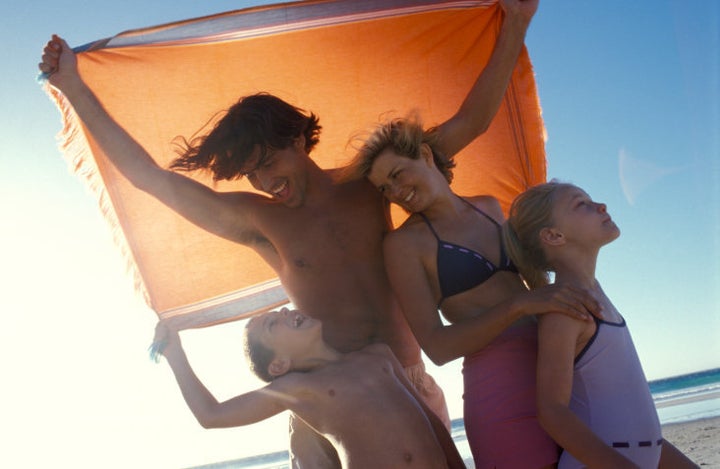
Spring break is a time that every family member anxiously awaits. Parents get to leave their cubicles and mounds of paperwork behind, while children look forward to some quality time with parents and siblings. And what better way to spend this much needed family fun together than soaking up the sun? With the warm, sunny days quickly approaching, there is one thing parents need to keep in mind before jet-setting to their desired locations: protecting their kid's skin from the sun. Without proper preparation, a week-long timeout from the real world can quickly transform into a nightmare filled with ouches and tears.
According to the Center for Disease Control and Prevention, it takes only 15 minutes of exposure to the sun's ultraviolet rays to begin the formation of burned and damaged skin cells. Though this short amount of time may not yet show the pink tinting of the skin, it does not mean that damage is not being inflicted. Normally, it takes approximately four hours for the effects of UV radiation to initially appear. For this reason, the CDC advises that sunscreens with a minimum SPF of 15 be applied every 20 minutes.
As a mother of three and a parenting expert, I have plenty of experience with sunburn and its related temper tantrums. I stress not only to clients, but also to family members and friends, the importance of using sun care products that not only provide maximum protection against harmful UV rays, but are also made up of all-natural ingredients. Parents should be aware that not all sunscreens are created equal and can even do more harm than good. Common sunscreen ingredients are suspected of containing carcinogens and/or hormone disrupters, including diethanolamine, benzophenone, oxybenzone, salicylates, and parabens. These ingredients can contribute to the development of cancer, inhibit normal sexual development and even cause reproductive problems. So before you lather on the lotion, check the label.
There is a variety of sunscreen products on the market today that feature safe and gentle, children-friendly ingredients that shield from the harmful effects of UV rays and do not pose any risk to your baby's health. Companies such as BabyGanics, Nature's Gate, TruKid and Eco each offer sunscreens with a minimum SPF of 20 that are guaranteed to be safe when using on infants and toddlers.
Keep in mind that sunscreen is not the only way to shield your tot's sensitive skin from the sun. Try incorporating a large-brimmed hat and light colored clothing into their beach attire. The hat will keep the sun off their face, while light clothing will deflect rather than absorb the sun's rays. This allows for a small amount of exposure to sunshine which is important as vitamin D is essential for a healthy lifestyle, so too much protection could deprive their growing bodies of it completely.
Just remember to keep calm if your child does get a little red after spending the day in the sun. The occasional minor sunburn will be inevitable at some point during a childhood full of sun exposure. Keeping a cold compress and aloe vera in the home or hotel room is a great idea for precautionary reasons. Both can be used on any member of the family to reduce swelling or peeling. No vacation needs to be ruined by a little burn; especially not yours!